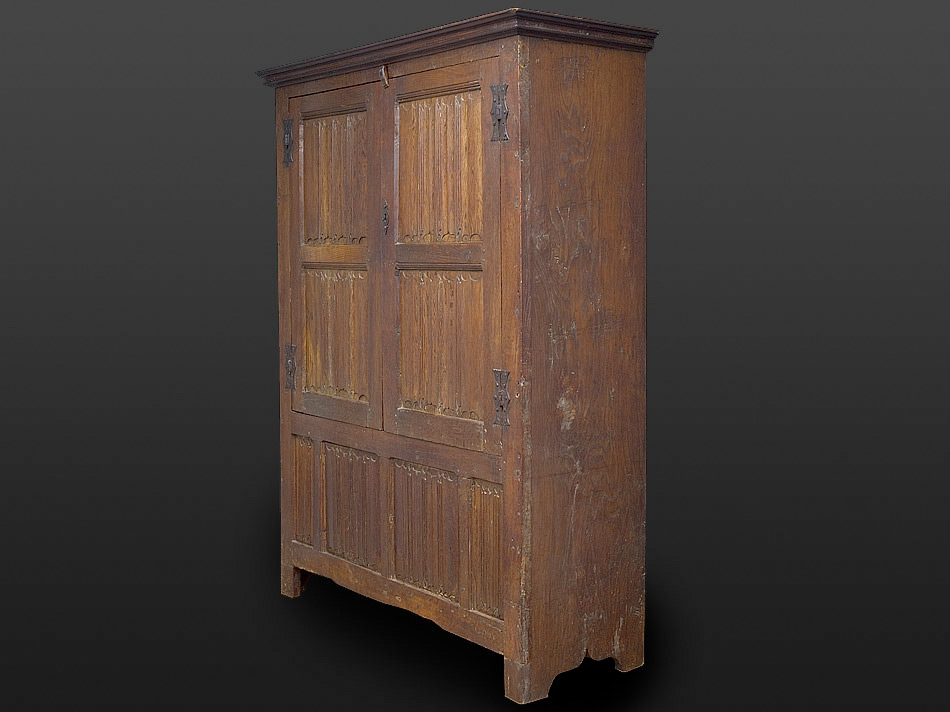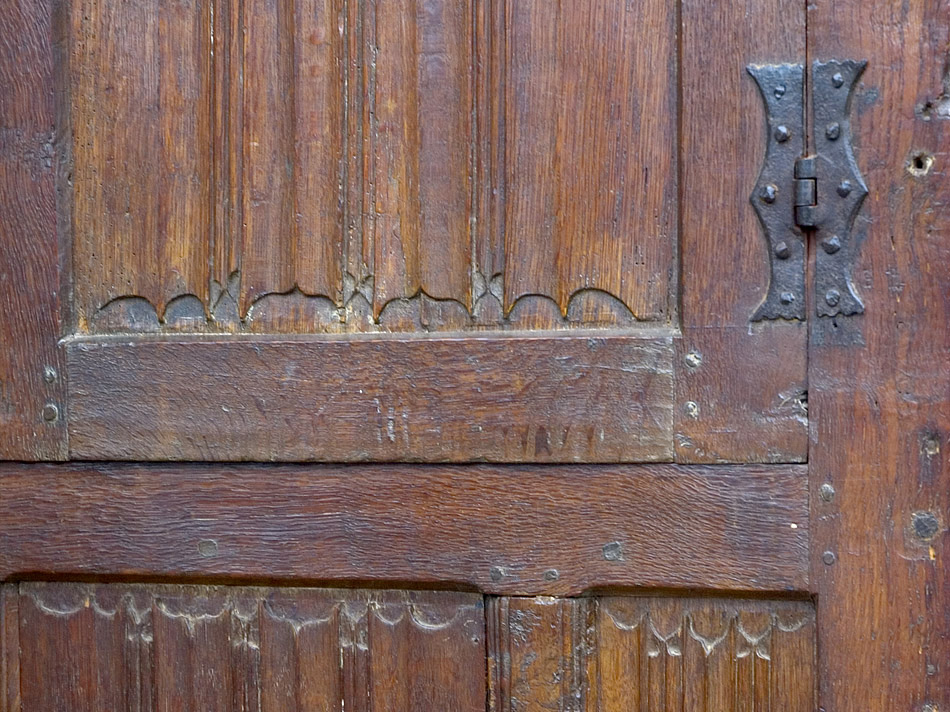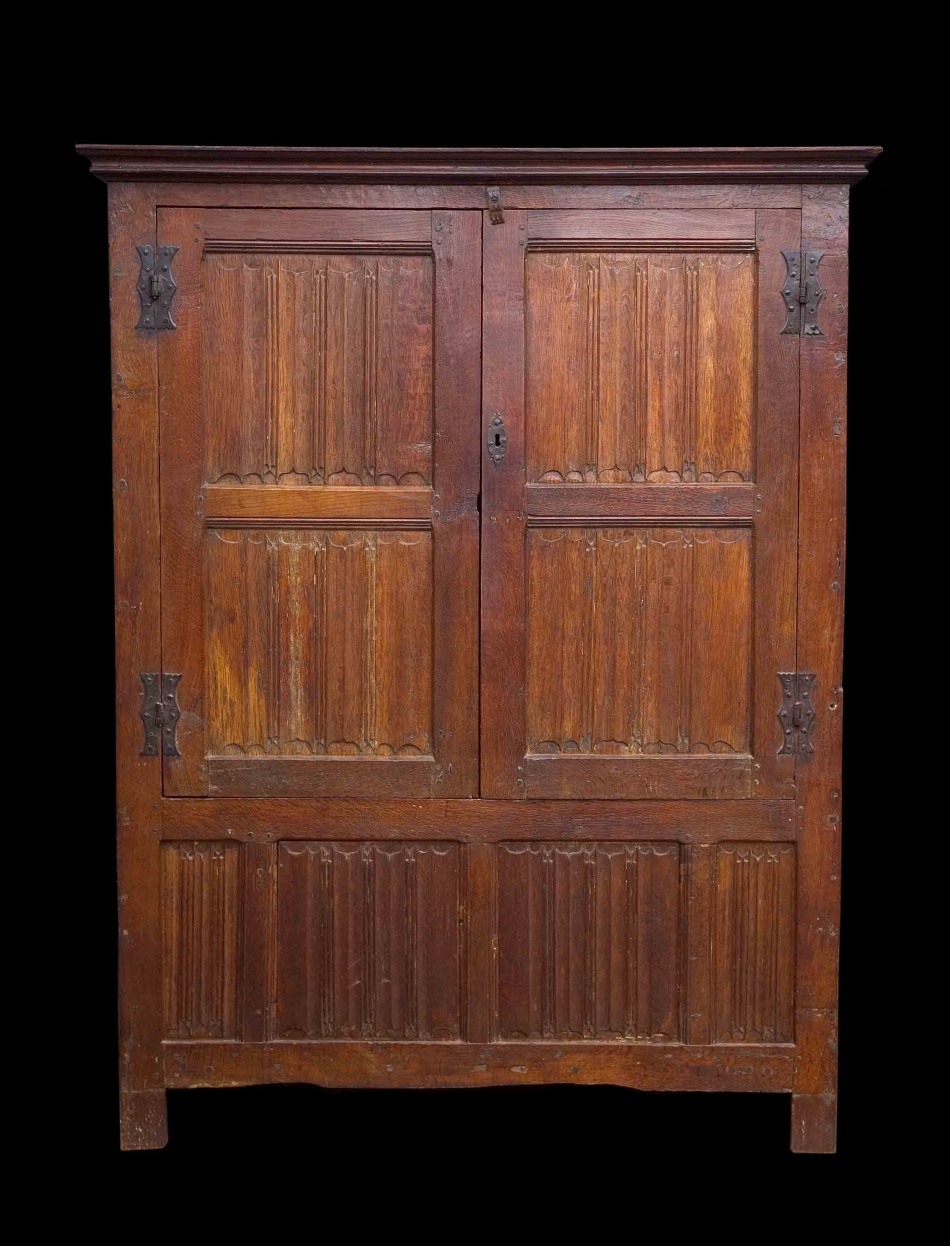Renaissance carved linenfold cupboard
1530
England
W 55 × H 70.5 × D 20
Stock # MARH0114
SOLD
English standing press with linenfold panels, joined facade, and board sides. The standing press configured with opposing long doors set above an enclosed base is an inherently English form with few if any Continental counterparts. Most date to the seventeenth-century and later. This imposing press, its joined facade framed with eight linenfold panels, may be the earliest extant example, dating to no later than the mid-sixteenth-century, and perhaps as early as the 1520s. The four expansive linenfold panels contained within the doors and the two only slightly smaller panels within the enclosed lower section feature the wide, wedge-shaped vertical selvage emblematic of English linenfold carving. Similar cusped details designed to simulate recurved rolls of fabric, as appear on the panels can also be seen on a standing cupboard with drawer illustrated as fig. 16 in The Age of Oak and Walnut, by Marcquoid. The doors hang upon hinges of an early form similar to hinges in stiu on a late fifteenth-century joined screen at the church of St. Andrew in Colebrook, Devon, illustrated in plates 243-244 in Continental Church Furniture in England: A Traffic in Piety by Charles Tracey. Although the screen in Colebrook is the work of Continental artisans, it was undoubtedly constructed in situ and utilizing local ironwork. Hinges of the same type were also employed on a pre-1550 English joined chest with linenfold panels illustrated as fig. 3:367 in Oak Furniture, The British Tradition by Chinnery. The use of massive single-board sides, butted to the facade and fixed with heavy pins driven through the front stiles, to enclose the sides and form the case is a common practice of mid-sixteenth-century English joiners. An English chest with linenfold panels and closely related board sides and feet shaped with a cusped arch appears as lot 65 in The Age of Oak and Walnut, Sothebys, 28 September, 2004.
Examples of English joined case-furniture bearing linenfold panels, aside from the ubiquitous chests, are exceedingly rare. The majority remain in fragmentary condition. The intact structure of the press, retaining all major structural elements and original poplar backboards, and its massive proportions make its survival even more remarkable. The surface retains extensive traces of two generations of red pigment, the first possibly original.
Doors flipped twice; outer panels of lower enclosure cut and hinged before 1800, and later refixed; later shelf removed; lock mortise patched; cornice molding later.


